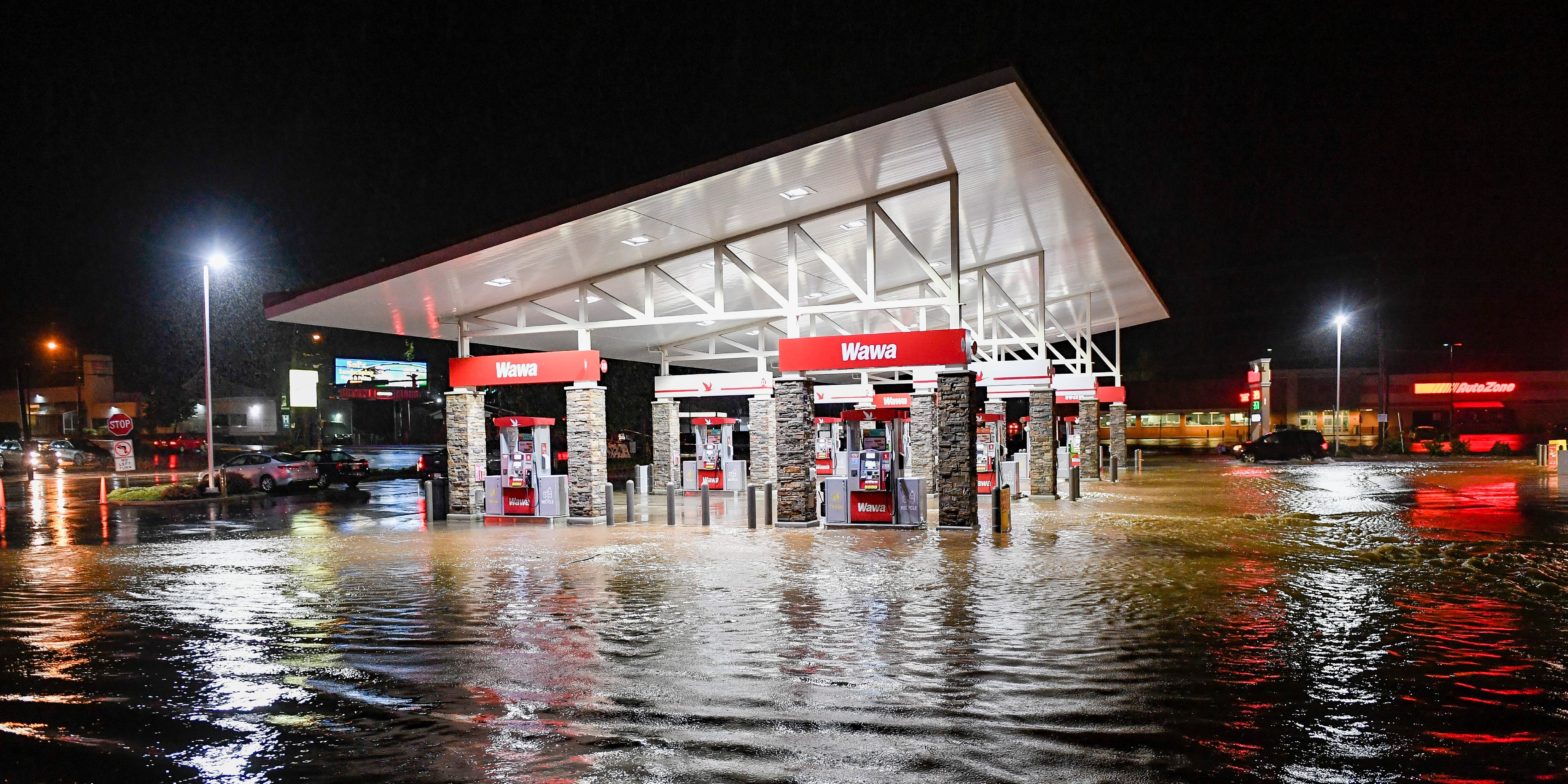The pandemic stifled global refining capacity and sent fuel stockpiles lower. A busy hurricane season in the US Gulf Coast could push fuel prices soaring even higher, analysts told Insider. Now, upwards of 90% of fuel-making refineries are being utilized, nearly the highest levels in five years. Loading Something is loading.
Reduced fuel-making capacities around the world are putting more pressure on global supplies, and refineries are still recovering from the repercussions of the pandemic just as this year’s hurricane season gets under way.
According to the EIA, 47% of total US petroleum refining capacity is located along the Gulf Coast, and if the area is struck by extreme weather, disaster could follow.
The Atlantic hurricane season is expected to be busier than usual, and JPMorgan analysts said if severe weather forces a significant chunk of refining capacity to go offline in Texas and Louisiana, like previous years, the US could run out of certain fuels.
“If we have a hurricane hit the gulf coast this year and impact refining capacity, there is a high chance we will experience shortages and this will cause continued rise in prices,” Debnil Chowdhury, vice president, head of Americas refining at S&P Global, told Insider.
War in Ukraine and sanctions on Moscow have exacerbated the energy crunch, and crude oil prices hit a two-month high of $123 this week following the European Union’s partial ban of Russian supplies.
Consumer demand for gas and diesel is returning to pre-pandemic levels ahead of the summer travel season, and fuel-making refineries are facing dwindling stockpiles even as they run near maximum capacity.
Currently, upwards of 90% of refineries are being utilized, the EIA reported, which is near the highest levels in the last five years. Western sanctions on Russia have meant 800,000 barrels a day are gone from the global market, and that could increase to 1.4 million this summer, JPMorgan said.
These factors have pushed gas prices to fresh highs — the US average hit a record $4.761 per gallon on Friday — and have also resulted in steep prices for diesel, jet fuel, and natural gas.
In May, US diesel stockpiles hit their lowest levels in 17 years, JPMorgan said, and US inventories of gasoline are roughly 8% lower than normal for this time of year.
If a hurricane shuts down a refinery in the Gulf Coast, it would likely take two to four years to bring it back online and could cost billions of dollars, Chowdhury said.
“The trader in me sees a pretty grim outlook on supply, which means prices are going higher,” Jim Mitchell, head of Americas oil analysts at Refinitiv, told Insider. “Going into hurricane season, nobody is going to be short [on fuels].”
During the pandemic, around three million barrels a day of global refining capacity closed, and a third of that happened in the US, according to JPMorgan. Moving forward, another 1.69 million barrels of US refining capacity is expected to disappear, analysts told the Wall Street Journal.
“When inventories are high, products can get anywhere for a relatively small cost,” Mitchell said. “Inventories are that buffer of security of supply. When this buffer drops, that’s when the probability of price rationing goes up.”
According to the two analysts, the impact a busy hurricane season could have on fuel prices could be dramatic.
If hurricanes were to shut down refining capacity for an extended period of time, it would draw down the total inventory in the Gulf Coast and reduce the region’s ability to send products to the Northeast and Latin America. This could cause localized spikes for prices at the pump.
Additionally, extreme weather could exacerbate shortages if it impacts pipeline capacity or shuts down Gulf Coast ports.
“This would actually cause inventory to build [in the Gulf Coast], but would cause global panic and pricing to rise globally,” Chowdhury said. Should all these factors happen, he said, crude and product prices could jump 10%-20%, and prices could be especially expensive in the Northeast.
“If a hurricane hits a significant refining area, we’ll see another wave of supply shortages.”
